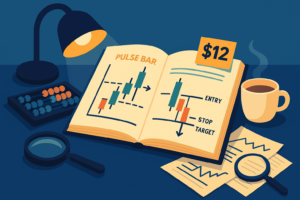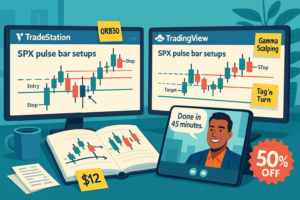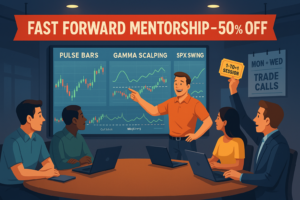 Ahoy there, Trader! ⚓️
Ahoy there, Trader! ⚓️
It’s Phil…
Ever get the feeling the chaos isn’t accidental?
Tariffs on Tuesday, reversed on Wednesday. Stocks tumble 1,000 points, then bounce 600. The VIX is doing Zumba, the media’s screaming “recession!”, and in the background… Trump is grinning like the Joker.
It’s easy to assume he’s lost the plot. But what if he’s playing the plot?
What if the strategy isn’t to save the markets before the election… but to break them first?
Because that 20% drop? It might just be the first domino in a plan that ends with lower debt, cheaper groceries, a rebounding economy – and a certain someone riding back into the White House on a red-capped rocket.
Let’s follow the logic – AntiVestor style.
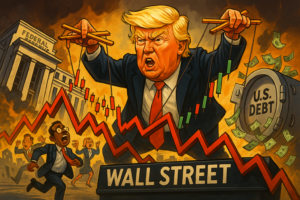
⬇️⬇️⬇️ – keep scrolling for more in-depth analysis – ⬇️⬇️⬇️
One Chart. One Setup. Daily SPX Income Locked In.
No indicators. No guesswork. Just pulse bar profits on repeat.
Why Trump Might Want a Market Crash
Trump is many things. Subtle? Not one of them.
But beneath the bombast, he knows how markets work. So let’s walk through the potential blueprint…
1. Crash the Market, Force the Fed’s Hand
-
A 20% drop in stocks = investor panic = flight to safety (U.S. bonds).
-
Bond demand = yields fall.
-
The Fed’s response? Cut interest rates to stabilise the economy.
-
Lower rates = cheaper debt servicing = Trump can refinance America’s $34 trillion problem on the cheap.
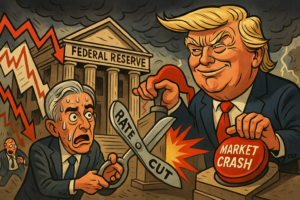
2. Lower Rates = Cheaper Debt & Cheaper Everything
-
Imagine refinancing $34 trillion from 5% down to 2.5%.
-
That’s hundreds of billions in savings annually.
-
Cheaper money fuels investment, housing, and infrastructure.
-
The Fed becomes an unwitting sidekick in Trump’s comeback tour.
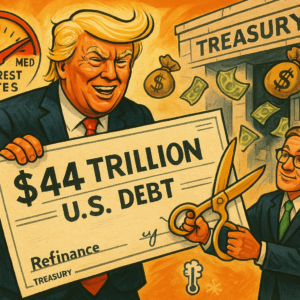
3. Tariffs + Recession = Economic Nationalism
-
Trump adds 25% tariffs on foreign goods.
-
Companies either eat the cost… or build in the U.S. to avoid them.
-
Countries retaliate with tariffs of their own.
-
U.S. farmers, producers, and manufacturers pivot inward.
Result? Cheaper goods made here, fewer imports, and a populist talking point:
“I brought manufacturing home. Biden shipped it overseas.”
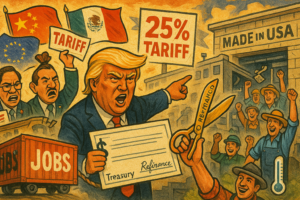
4. Hurt the Wealthy, Help the Voter
-
94% of stocks are owned by just 8% of Americans.
-
A crash mainly stings the wealthy.
-
But if it brings cheaper groceries, gas, and goods for everyday people?
-
Trump gets to say: “I hurt the billionaires to help the people.”
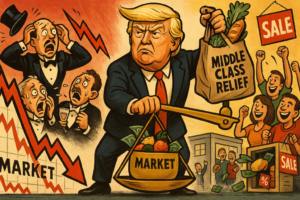
5. Crash Now, Rebound After
-
Let Biden hold the bag for the collapse.
-
Once Trump’s in, markets rally. He takes the credit.
-
It’s the ultimate “buy-the-dip” presidency.
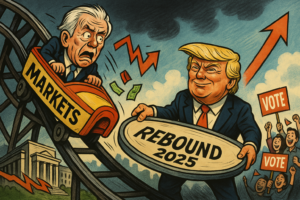
6. Use the Chaos for Political Ammo
-
Trump thrives in disorder.
-
Market swings become campaign soundbites.
-
“The Fed ruined the economy… I’ll fix it.”
-
“Woke investing crashed your 401k… I’ll ban ESG tomorrow.”
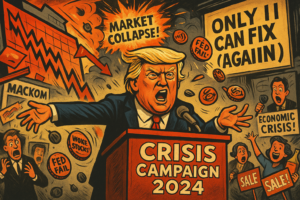
7. Volatility Helps the Smart Money
-
While retail panics, big funds scoop up assets on sale.
-
Option premiums skyrocket – hello income for the traders who know what they’re doing.
-
Hint: Pulse Bars + SPX credit spreads = paydays in chaos.
It’s like a trading version of House of Cards… except this time, the house is the card.
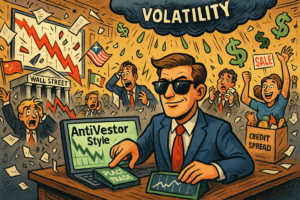
Expert Insights: Common Mistakes in a Crash? Panic Exits.
Most traders see red and hit ‘sell’.
But when you’re trading credit spreads on SPX…
-
Your risk is already defined
-
Time is your ally
-
And high IV = higher premiums
That means your income actually increases in chaos.
You just need to follow a proven, mechanical setup like Pulse Bars… not trade off vibes and fear.
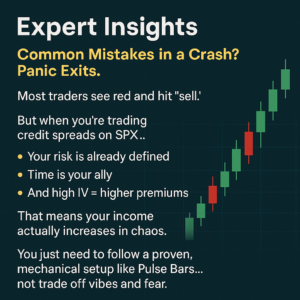
Fun Market Fact
In 1987, the Dow crashed 22.6% in a single day. But what most people forget?
It ended the year positive.
Markets love to overreact… and then quietly rebound while everyone’s still nursing their trauma.
Which is exactly why a 20% drop now could be politically useful – crash early, recover later, blame the Fed, and ride the bounce.
For traders using defined-risk setups like credit spreads, it’s the golden age of premium. You get paid to wait out the chaos – just like we teach in the SPX Income System.
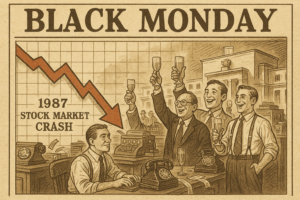
Happy trading,
Phil
Less Brain, More Gain
…and may your trades be smoother than a cashmere codpiece
p.s. There are 3 ways I can help you…
- Option 1: The Book (Just $12)
A complete guide to the system.
Written to be clear, concise, and immediately actionable.
>> Get the Book Here
- Option 2: Full Course + Software Access – 50% Off
Includes the video walkthroughs, tools for TradeStation & TradingView, and everything I use daily. Plus 7 additional strategies
>> Get DIY Training & Software
Join today and I will personally hop on a quick start call with you to get setup and running in my system in less than 45-mins.
- Options 3: Join the Fast Forward Mentorship – 50% Off
>> Join the Fast Forward Mentorship – trade live, twice a week, with me and the crew. PLUS Monthly on-demand 1-2-1’s
No fluff. Just profits, pulse bars, and patterns that actually work.

